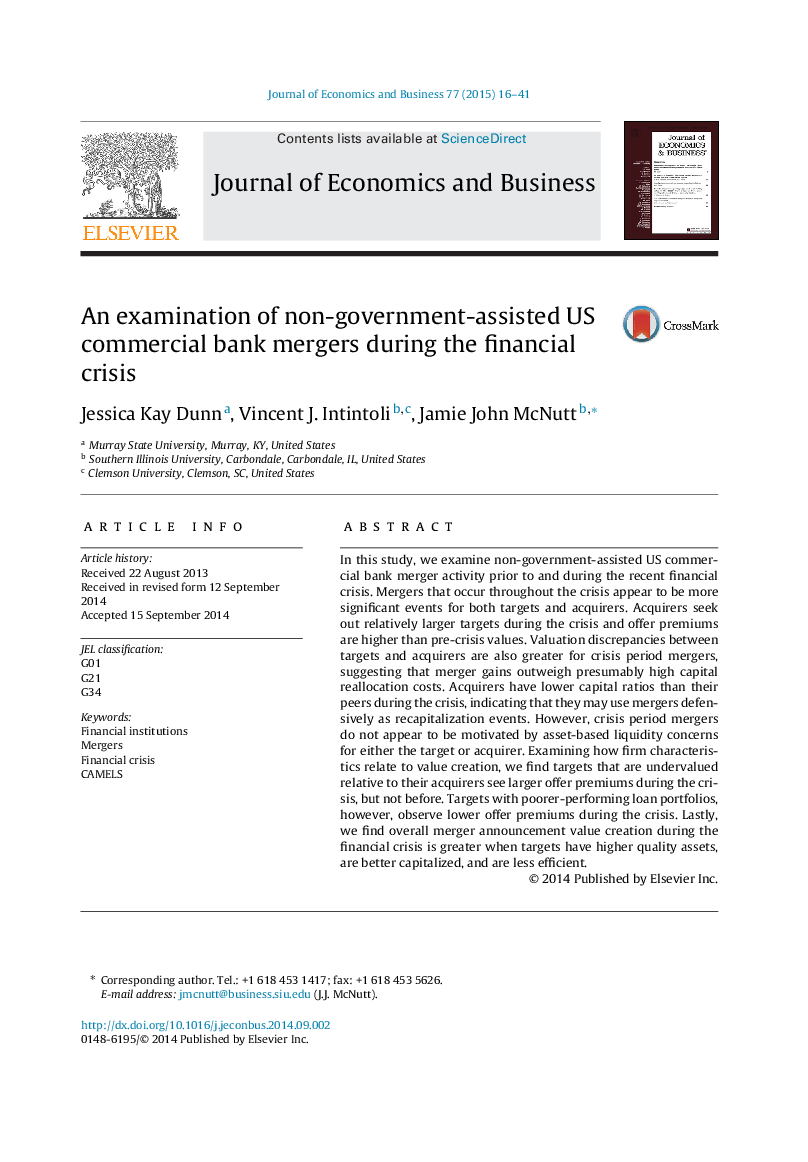| Article ID | Journal | Published Year | Pages | File Type |
|---|---|---|---|---|
| 7360364 | Journal of Economics and Business | 2015 | 26 Pages |
Abstract
In this study, we examine non-government-assisted US commercial bank merger activity prior to and during the recent financial crisis. Mergers that occur throughout the crisis appear to be more significant events for both targets and acquirers. Acquirers seek out relatively larger targets during the crisis and offer premiums are higher than pre-crisis values. Valuation discrepancies between targets and acquirers are also greater for crisis period mergers, suggesting that merger gains outweigh presumably high capital reallocation costs. Acquirers have lower capital ratios than their peers during the crisis, indicating that they may use mergers defensively as recapitalization events. However, crisis period mergers do not appear to be motivated by asset-based liquidity concerns for either the target or acquirer. Examining how firm characteristics relate to value creation, we find targets that are undervalued relative to their acquirers see larger offer premiums during the crisis, but not before. Targets with poorer-performing loan portfolios, however, observe lower offer premiums during the crisis. Lastly, we find overall merger announcement value creation during the financial crisis is greater when targets have higher quality assets, are better capitalized, and are less efficient.
Related Topics
Social Sciences and Humanities
Business, Management and Accounting
Strategy and Management
Authors
Jessica Kay Dunn, Vincent J. Intintoli, Jamie John McNutt,
